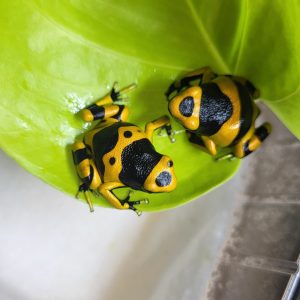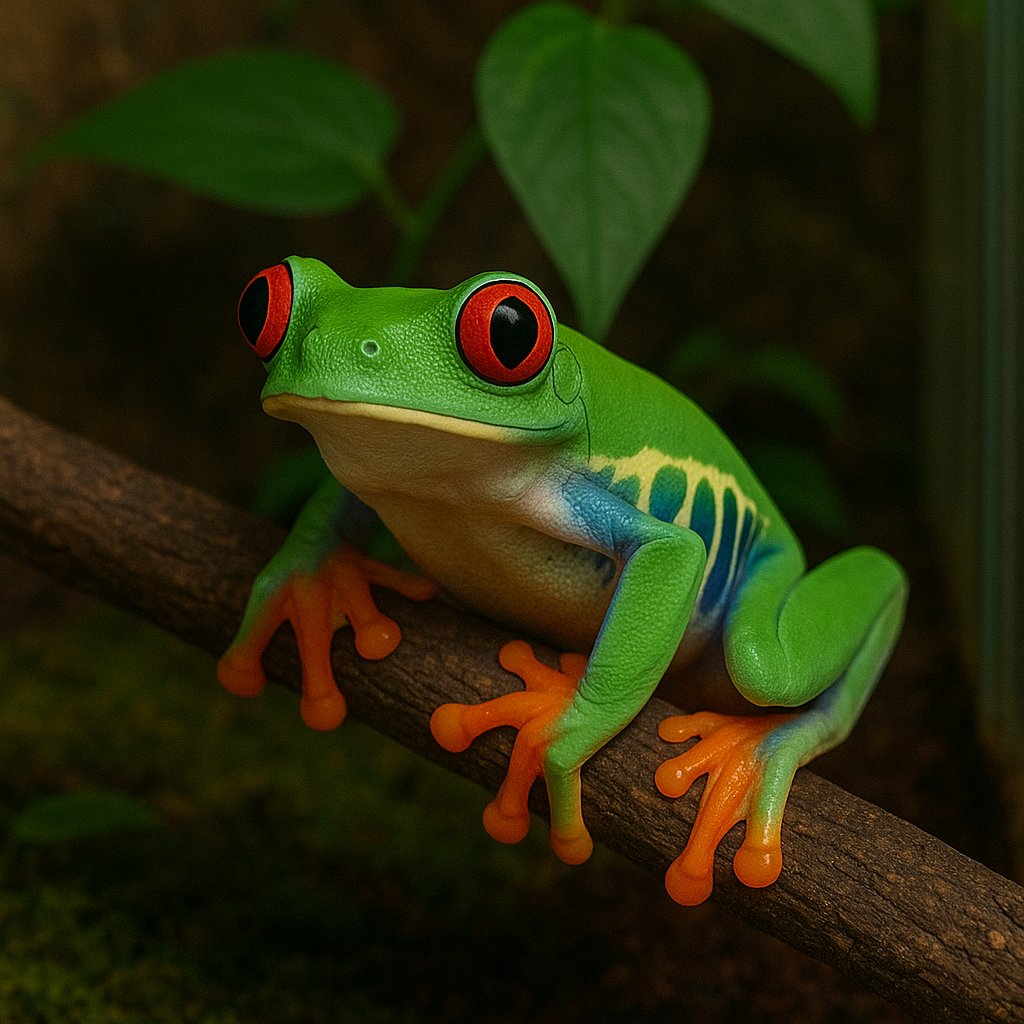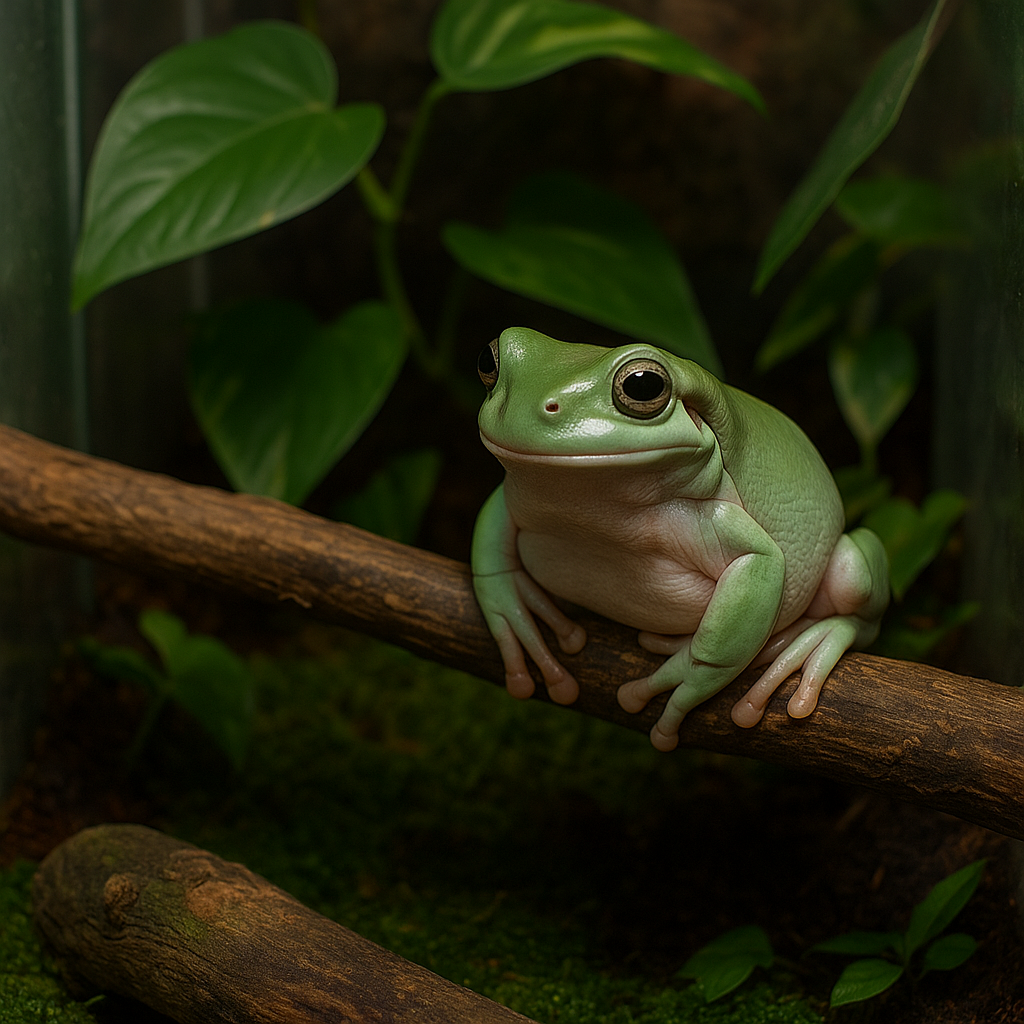Breeding dart frogs is both rewarding and important for species conservation, hobby sustainability, and education. But without a solid understanding of genetics and responsible practices, inbreeding, weak lineages, and confusion over morphs can occur. This article provides a complete overview of dart frog genetics, lineage tracking, ethical breeding, and morph clarity for UK hobbyists.
Why Genetics Matter in Dart Frog Breeding
Good genetics are essential to:
- Prevent inbreeding depression
- Maintain physical and behavioural traits
- Preserve wild-type integrity
- Support healthy captive populations
- Avoid confusion between morphs or hybridisation
Basic Genetics in Dart Frogs
| Term | Definition |
|---|---|
| Genotype | Genetic code of a frog (not always visible) |
| Phenotype | Physical expression of the genotype (e.g. colour, pattern) |
| Homozygous | Two identical alleles for a trait |
| Heterozygous | Two different alleles for a trait |
| Line-bred | Selectively bred to stabilise a morph over generations |
Understanding simple Mendelian inheritance helps when working with known morphs or colour traits.
What Is a Morph?
A morph refers to a visually distinct population within a species. Examples include:
- Dendrobates tinctorius ‘Azureus’, ‘Patricia’, ‘Bakhuis’
- Ranitomeya variabilis ‘Southern’, ‘Highland’, ‘Tumuc’
- Oophaga pumilio – dozens of location-based morphs
Morphs may differ in:
- Colour & pattern
- Call structure
- Behaviour (parenting, aggression)
Never mix morphs of the same species — it risks genetic dilution and morph confusion.
Lineage Tracking: Why It Matters
UK and EU breeders now prioritise detailed lineage tracking. This means keeping records of:
- Morph and locality (e.g. ‘Tinctorius Bakhuis’)
- Source (wild caught, F1, F2, breeder)
- Parent pairing (M/F codes)
- Hatch and metamorph dates
Use a basic spreadsheet or a free digital tool. Include a card or QR code with each frog sold.
Ethical Breeding Practices
- Only breed healthy, unrelated adults (ideally F1 or F2)
- Quarantine all incoming animals
- Avoid morph mixing or hybridisation
- Cull or separate frogs with major deformities (e.g. SLS)
- Disclose parentage and generation when selling
Consider a visual marking system using to track enclosures and lineage.
Selective Breeding vs. Hybridisation
Selective breeding = choosing the best traits within a morph (e.g. bold pattern, strong colour) and pairing them over time. This is safe if done within a single morph and population.
Hybridisation = crossing two species or morphs. This should never be done in the dart frog hobby due to the high risk of misidentification, loss of locality, and weaker offspring.
Common Pitfalls in Breeding
| Mistake | Risk |
|---|---|
| Mixing morphs | Hybrid offspring; loss of true lines |
| Inbreeding siblings | Reduced fertility; weak immune systems |
| Overbreeding females | Fatigue, egg binding |
| Poor documentation | No traceability; devalues offspring |
Best Practices for the UK Hobby
- Join UK-specific breeder groups (e.g. Dart Frog UK, reputable FB groups)
- Use agreed morph naming conventions
- Ask for lineage data when buying stock
- Maintain stable temperatures (22–25°C) and high humidity (70–100%) during breeding
- Offer bromeliads on BromeliHooks as ideal egg and tadpole sites
Selling Tadpoles or Frogs Responsibly
- Only sell once froglets are fully developed and feeding
- Label all animals clearly by morph, sex (if known), and hatch date
- Provide care sheet or link to educational content
- Offer courier delivery using DEFRA-compliant amphibian transport or in-person collection
- Never sell hybrid or mixed-morph offspring
Conclusion
Selective dart frog breeding helps sustain the hobby and protects wild traits — if done responsibly. Prioritise clear morph identification, track lineages, and always keep education and conservation in mind when raising the next generation of frogs.
FAQs
Q: Can I breed frogs from the same clutch?
A: No. Sibling breeding leads to inbreeding depression over time.
Q: What if I don’t know the parents’ origin?
A: Label offspring as “unknown lineage” and do not sell as confirmed morphs.
Q: Can I keep multiple morphs together?
A: Only if they are different species and clearly distinguishable. Never breed from a mixed setup.
Q: Are hybrids ever OK?
A: Not in dart frogs. Hybrid offspring are often less viable and misrepresented in sales.




